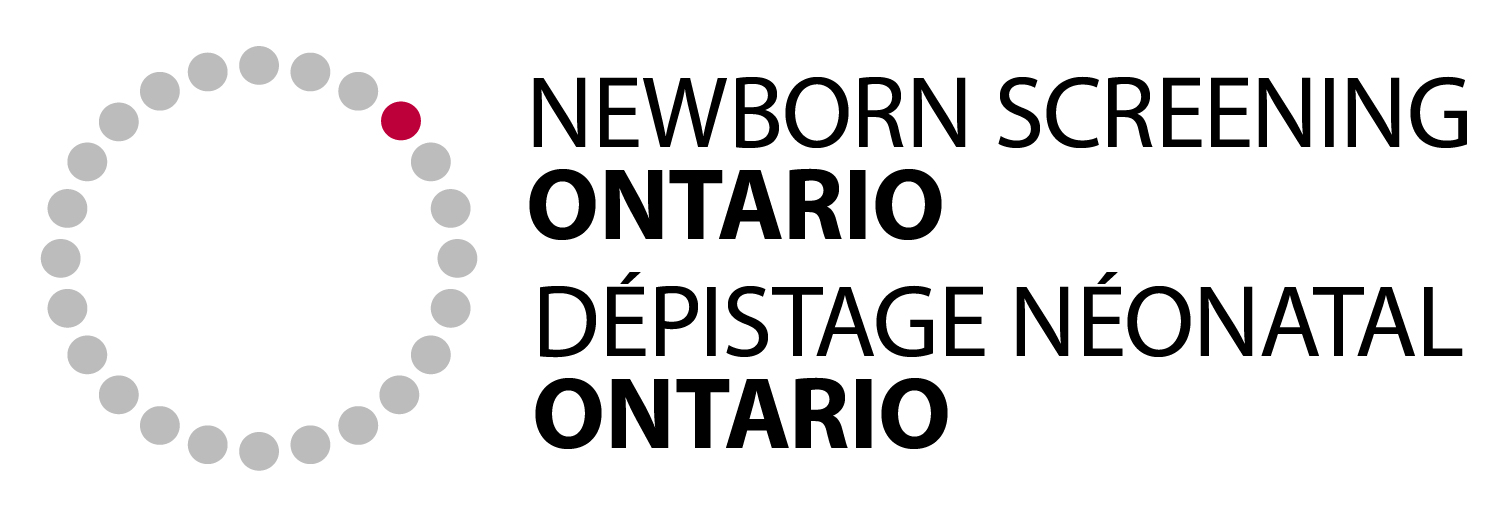- The best way to screen for biliary atresia is using the infant stool colour card (ISCC) to check for pale stool (poop) in the first month of a baby’s life.
- If a baby has stool that is pale in colour (acholic), there is a possibility they could have biliary atresia. It is important to contact NSO, so that an initial telephone assessment can be completed. If necessary, NSO will arrange a referral to a specialist, based on this assessment, to determine the cause of the pale stool.
- Screening helps to identify biliary atresia earlier which means that treatment can be started sooner.
Biliary Atresia
At a glance
| Approximate incidence in Ontario: | Marker measured: | Screening can prevent: | Treatment: |
| 1 in 17,000 | Stool colour, direct/conjugated bilirubin | Liver disease, liver transplantation, early death | Kasai procedure (early diagnosis), liver transplant (late diagnosis) |
- Biliary atresia is a rare but serious disease of the liver and bile ducts. It is present at birth, with symptoms that appear in the first month after birth.
- Bile is a digestive fluid that is made in the liver and empties into the intestine to help digest food. It enters the stool (poop) giving it a darker colour. In biliary atresia, bile cannot get from the liver to the stool, causing pale in colour (acholic) stool.
- In biliary atresia, bile builds up in the liver, which can damage it. Without treatment, this can lead to liver failure and eventually death. Treatment for biliary atresia is a surgery to allow bile to move from the liver to the intestines.
Screening positive for biliary atresia
- It is normal for parents and guardians to feel worried when their baby has a screen positive result.
- When a baby has stool that is pale in color, NSO is contacted to determine if this represents a screen positive result for biliary atresia.
- A positive screening result means there is a chance that your baby could have biliary atresia and more testing is needed to know for sure.
- NSO refers babies with a screen positive result for biliary atresia to a pediatric gastroenterologist, a doctor who specializes in issues of the stomach and intestines
- Follow-up testing usually starts with blood work to look at how the liver is working. This test, along with other clinical assessments can direct specialist physicians to identify whether BA is the cause of the pale stool.
Possible follow-up test results
- Normal – the baby does not have biliary atresia
- Abnormal – the baby does have biliary atresia and will need treatment. The family will be supported by a team of caring specialists.
- Inconclusive – more testing is required to find the cause of the pale stool. The baby will be followed closely to ensure they receive optimal care.
Babies with biliary atresia can present the following signs and symptoms within the first month of life:
- Pale stool colour
- Jaundice lasting longer than 2 weeks of age
- Darker coloured urine
- Irritability and weight loss
- Abdominal distension
Early identification and treatment can help prevent:
- Liver damage or failure, potentially requiring transplant
- Surgical treatment will be planned as soon as the diagnosis of biliary atresia is confirmed
- Transfer to a hospital that specializes in paediatric liver and gastrointestinal problems may be needed
- Paediatric gastroenterologists or hepatologists care for babies with biliary atresia
- There are no medications to treat biliary atresia
- Treatment includes a surgical procedure called a Kasai Procedure. This is a surgical procedure to re-establish bile flow from the liver to the intestines
When identification and treatment start early, babies with biliary atresia can have a better chance to grow and develop normally.
Contact Us
Children’s Hospital of Eastern Ontario
415 Smyth Road
Ottawa, Ontario K1H 8M8
Toll-Free: 1-877-627-8330
Local: (613) 738-3222
Fax: (613) 738-0853
